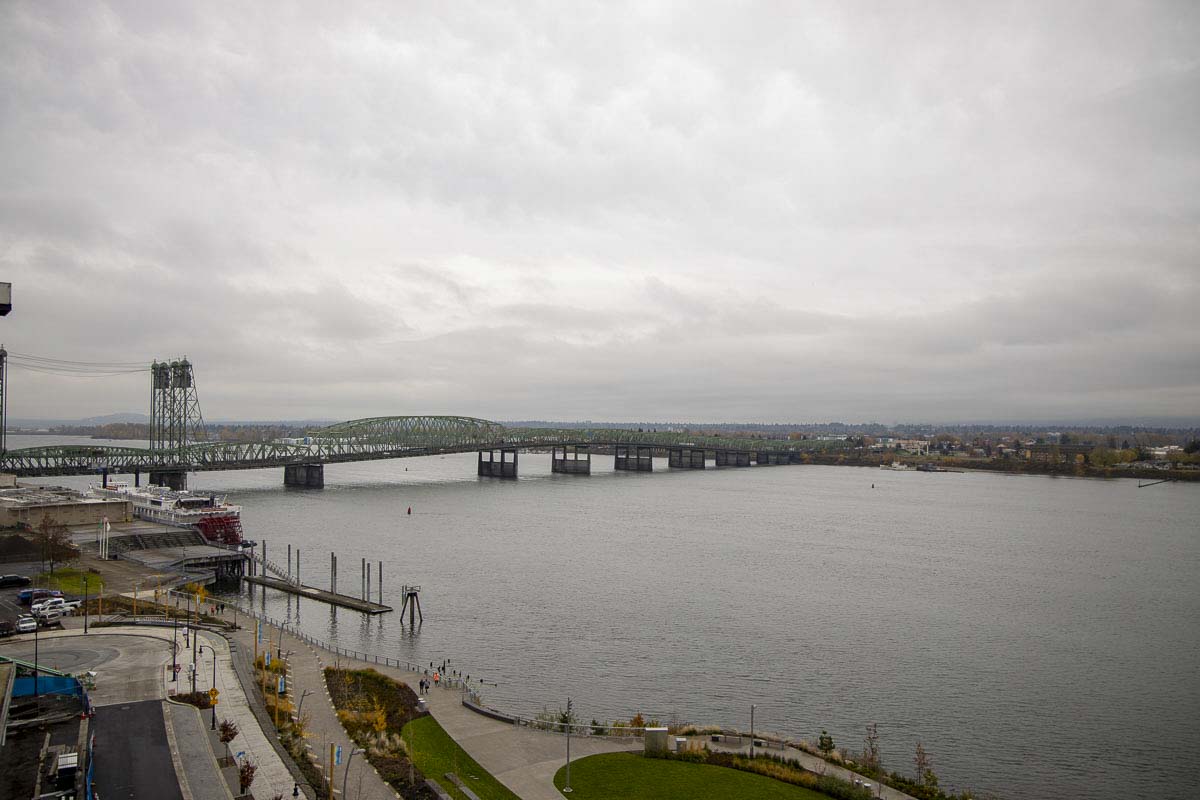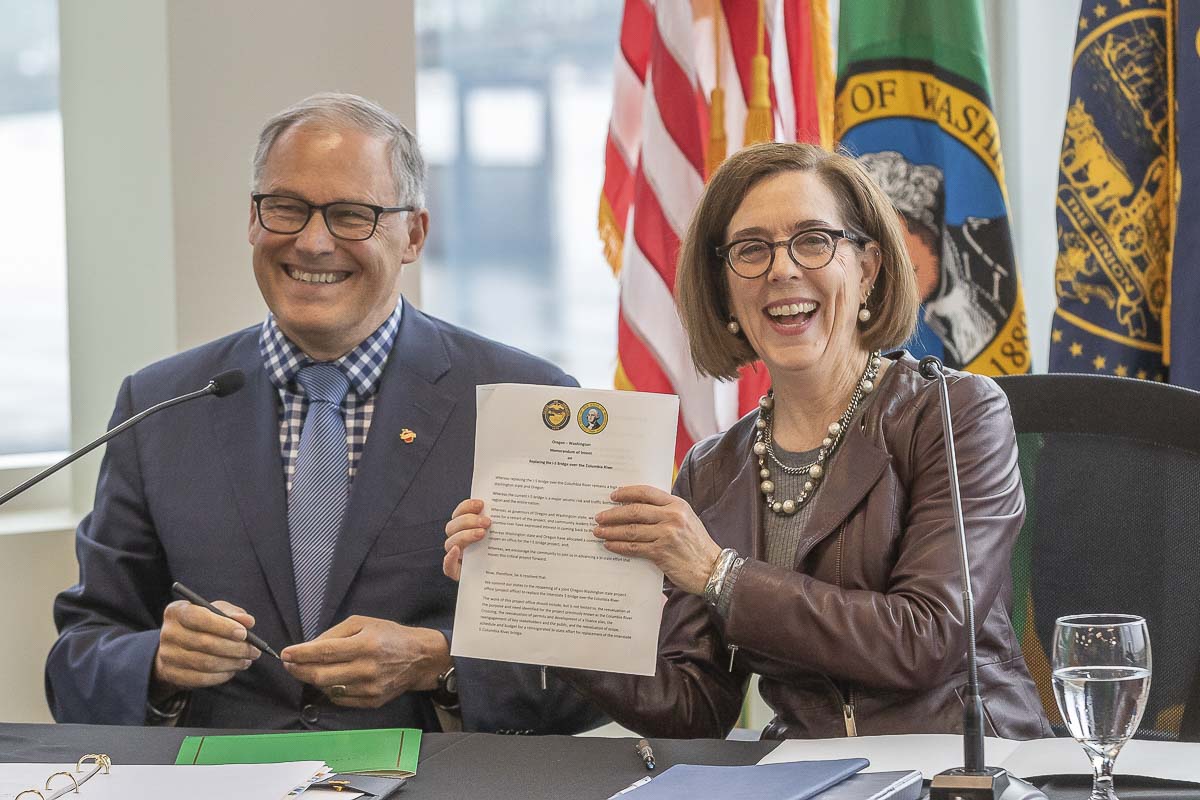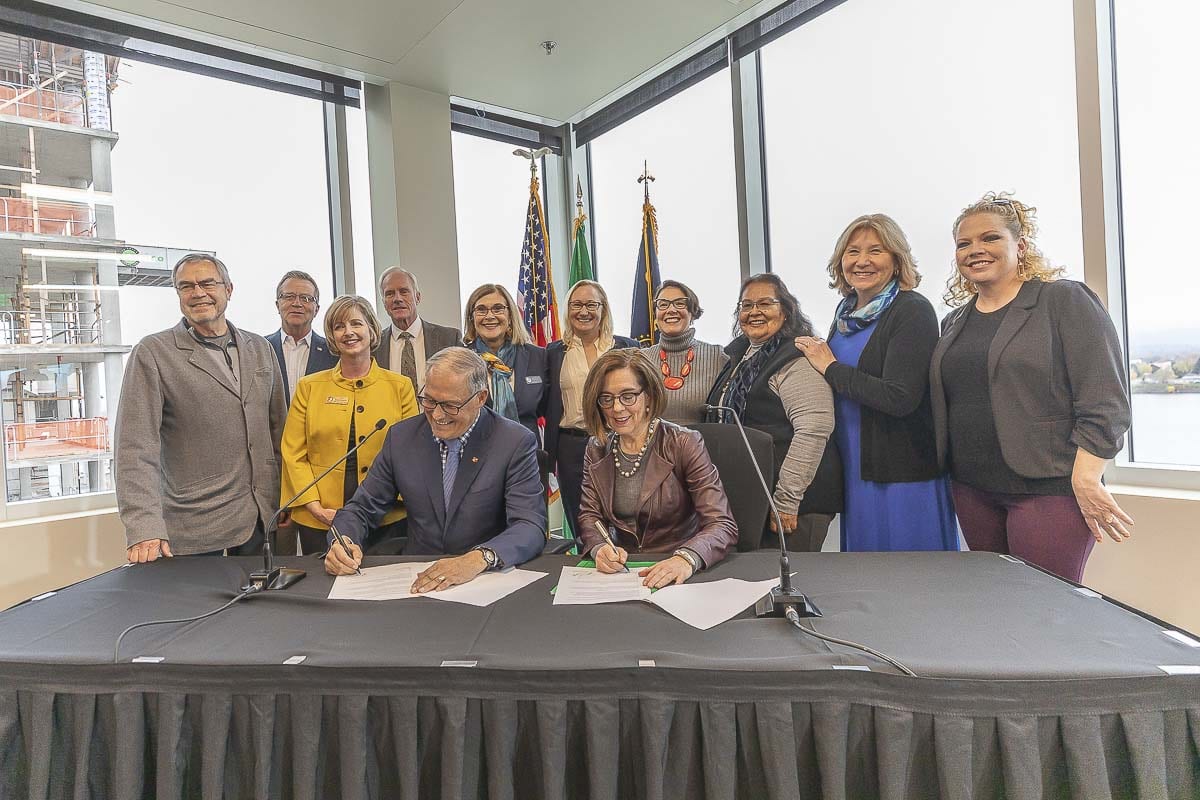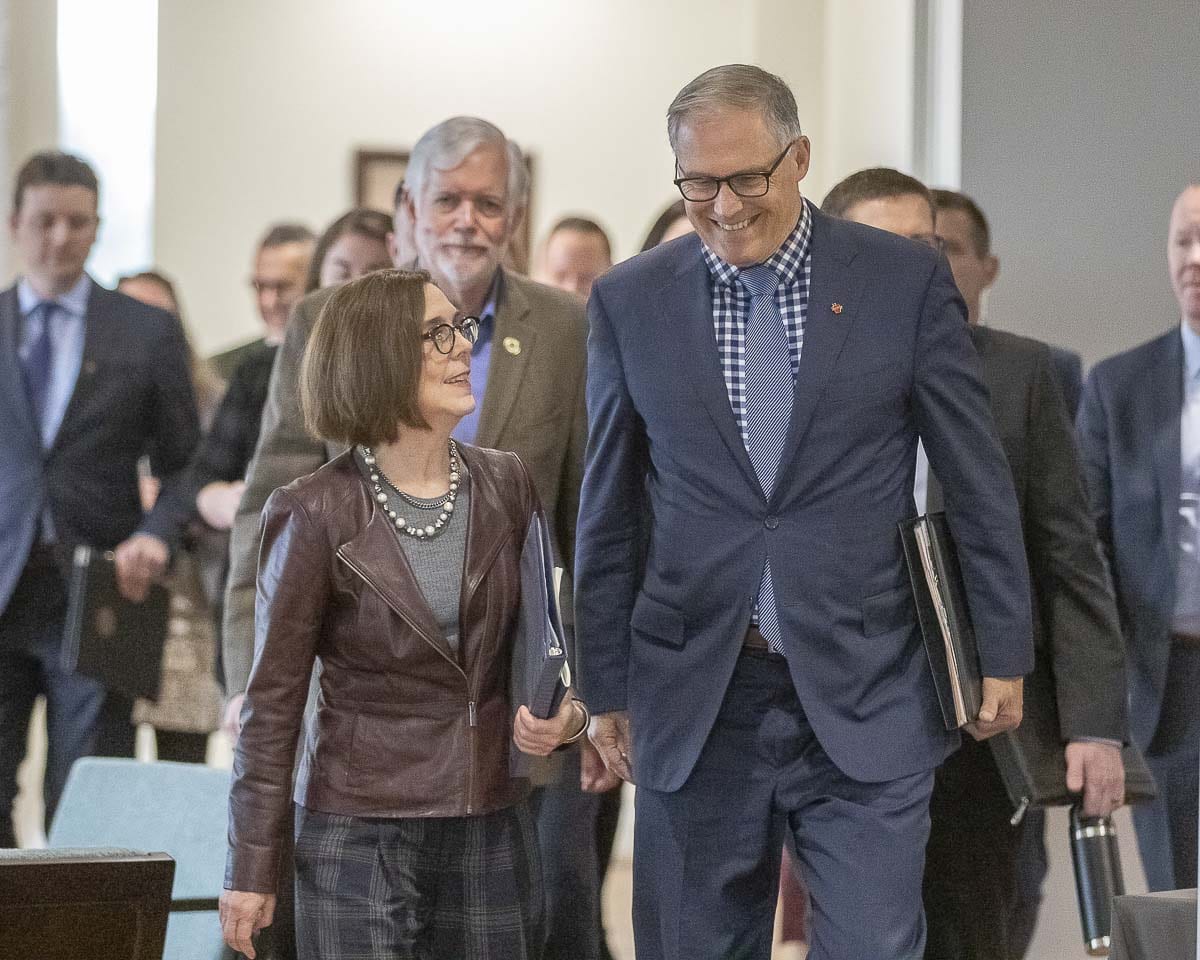Mass transit is a key component, but both state leaders say they are open to options other than light rail
VANCOUVER — The governors of Oregon and Washington sat at a table on Monday on the 7th floor of the M.J. Murdoch Charitable Trust on the new Vancouver Waterfront, signing a Memorandum of Intent to replace the aging bridge across the Columbia River looming behind them.

The spans, built in 1917 and 1958, are at risk of failure during a moderate earthquake, and represent “the only stoplight between Mexico and Canada on the I-5 corridor,” said Washington Governor Jay Inslee.
“We do not have an option,” said Inslee. “This bridge has to be replaced.”
“It’s high time that we address the congestion between our two states and invest in a bridge that will withstand the test of time,” said Oregon Governor Kate Brown.
While mentioning congestion, Brown said replacing the seismically unsafe span with one that is more earthquake friendly is her top priority, followed by the inclusion of some form of high-capacity mass transit.
“As we look ahead to an eventual downturn, we have to invest in the bedrock of our state’s economies,” Brown said. “And that’s infrastructure. When working properly, infrastructure goes unnoticed, but without it, we’re literally in for a bumpy ride.”

The two-page Memorandum of Intent is vague in terms of its overall goal, citing that the two states will open a joint Oregon-Washington project office that will re-evaluate the purpose and need and permits for the failed Columbia River Crossing Project.
The governors also agreed to assume that any plan for a new bridge will include high-capacity transit, though Inslee said they would not assume light rail will ultimately be the solution, despite that being the stated preference of both state leaders.
“We intend this process to be a data-driven, transparent process,” said Inslee. “We want to look at the data on how to design a bridge that actually will do the best job possible based on data rather than ideology.”
“I think what else is key is that we’re going to be doing a traffic analysis ahead of time,” noted Brown, “to help us determine what’s the best solution for the I-5 Bridge Replacement Project.”

The memorandum also states that the two sides will work together to develop a finance plan for the project, which will “assume some costs will be covered by tolls.”
The memorandum runs for five years, and can be amended or renewed only by consent of the governors of both states. Either state can leave the agreement with three month’s written notice.
Inslee said it is his hope that the states can resecure federal funding that was available for the original Columbia River Crossing Project, but if that is unsuccessful, it is likely that tolling will be a necessary mechanism to pay for the bridge.
“We’ve recognized reality that that could be under discussion,” said Inslee.
“This project is key not just for the economies of Oregon and Washington, but it’s key for the economies in the entire western region,” added Brown. “So I think it’s critically important that we have our federal partners at the table.”
Afterwards, Vancouver Mayor Anne McEnerney-Ogle said it’s simply the reality that tolls will likely be needed to fund the bridge, especially with next year being a federal election year when few major projects are funded.
“Each time we go back to Washington, D.C. we ask that same question, and each time the answer is ‘there are no projects that are not being tolled,” said McEnerney-Ogle. “Every single project has a toll. We’re not special. We would love for the federal government, and you heard Governor Inslee say ‘100 percent federally funded?’ You bet. Those days are long gone.”

Asked why he believes this project can succeed now, when the CRC Project fell apart in 2013, Inslee said the state legislatures have a different “makeup” this time around, and that there is now a greater understanding of the region’s earthquake risk with new studies about the Cascadia Subduction Zone.
“This bridge could fall down any day, with a small seismic event,” said Inslee. “We do not have a choice, we have to replace this bridge. And that’s why I’ve been quite open-minded about the method of doing so in this regard.”
Inslee said he agrees that capacity needs to increase, but that he would like to do so through the inclusion of a mass transit component like light rail, rather than increasing the number of vehicle lanes on the new span.
The two states have set aside $44 million to establish a project office, likely in Vancouver. While that hasn’t happened yet, the office is expected to provide a draft progress report by the end of this year, with a final report due by Dec. 1, 2020.
“We’ve instructed our Departments of Transportation to assign dedicated staff to help this program office when it gets started,” state Inslee. “Program development will begin once an administrator and consultant are in place.”
The project office will be responsible for evaluating the scope, schedule and budget for replacing the bridge, as well as re-engaging key stakeholders and the public in the process.
The Joint Interim Committee on the Interstate 5 Bridge, comprised of eight lawmakers each from Oregon and Washington, has already met twice with a third meeting scheduled for Dec. 20 in Washington state.
Impact of I-976
Gov. Inslee and Washington State Transportation Secretary Roger Millar were asked about the decision from the governor’s office to “pause” a number of traffic improvement projects statewide in the wake of voters approving a return to $30 car tabs via the passage of Initiative 976.
“The governor directed me and my team to develop a list of projects that add capacity to our system, and put those projects on hold until the governor can propose a budget and the legislature can consider a budget,” said Millar. “The goal being to keep those resources available in the event that anybody wants to make decisions to spend them differently.”
Millar says he and the governor believe that their best course right now is to preserve existing infrastructure.
“There’s a lot of money in our budget that is adding to the system,” he said. “We can put a pause on that while the governor and the legislature go through their process. That doesn’t mean that those projects are dead, it just means they’re paused while the conversation goes on.”
Asked to respond to critics who’ve accused the governor’s office of “retaliation” against voters over the passage of I-976, Inslee bristled.
“No critics who know what they’re talking about say that because they wouldn’t know what they’re talking about,” said the governor. “This is a reality-based, financially necessary step to give the legislators a reserve, if you will, to figure out how to deal with the impacts of this.”
Inslee went on to say his administration would prioritize running buses and ferries, or fixing existing bridges and highways, over new capacity until the funding issues can be figured out.
“It is not an easy decision because we have constituents all over the state of Washington who want to see new capacity in their neighborhoods,” said Inslee. “They want these projects. They’ve been waiting for decades sometimes for these projects, and we’re now going to have to tell them that those are hold at least pending some of the resolutions.”




